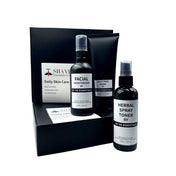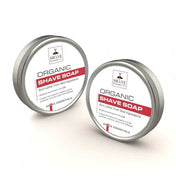At Shave Essentials, we recently added straight razors to our collection. These timeless tools provide an unparalleled shaving experience, but they can be a bit intimidating for newcomers. To help you get acquainted, we’ve put together a guide to understanding the different parts of a straight razor.
1. Blade
The blade is the heart of the straight razor. It is typically made from high-carbon steel, which allows for a sharper and more durable edge. The blade can be divided into several parts:
- Point: The tip of the blade, which can come in various shapes such as round, square, or French.
- Edge: The sharpened part of the blade that makes contact with your skin.
- Spine: The thicker, unsharpened back of the blade, which helps maintain the correct shaving angle.
- Heel: The part of the blade nearest to the tang, providing balance and control.
2. Tang
The tang is the narrow part of the blade that extends into the handle. It provides balance and allows for a secure grip. The tang often features a notch or shoulder to prevent the fingers from slipping during use.
3. Pivot Pin
The pivot pin is the small metal pin that connects the blade to the handle, allowing the blade to fold into the handle for safe storage. The tension of the pivot pin can often be adjusted to ensure the blade opens and closes smoothly.
4. Scales (Handle)
The scales, or handle, are the two pieces that encase the blade when it is folded. They are usually made from materials like wood, plastic, or metal. The scales provide protection for the blade and a comfortable grip for the user.
5. Shank
The shank, also known as the monkey tail or tang, is the part of the blade that connects to the scales. It provides leverage and control, helping to guide the blade during the shave.
6. Shoulder
The shoulder is the part of the blade near the tang, often a slightly thicker area that provides additional support and stability to the blade. It helps to reinforce the blade and ensure a smooth transition from the blade to the tang.
7. Jimps
Jimps are small ridges or notches on the underside of the tang. They provide extra grip for the fingers, especially when the razor is wet, ensuring a secure hold and precise control during the shave.
8. Point Types
- Round Point: Ideal for beginners, as it’s less likely to cause nicks.
- Square Point: Offers precision for experienced users but requires careful handling.
- French Point: Combines elements of both round and square points, offering a versatile option for various shaving needs.
Conclusion
Understanding the parts of a straight razor is essential for mastering its use and maintaining it properly. Whether you’re a seasoned shaver or a newcomer to the world of straight razors, knowing these components will enhance your shaving experience and help you achieve the perfect shave. Visit Shave Essentials today to explore our range of high-quality straight razors and take your grooming routine to the next level.





